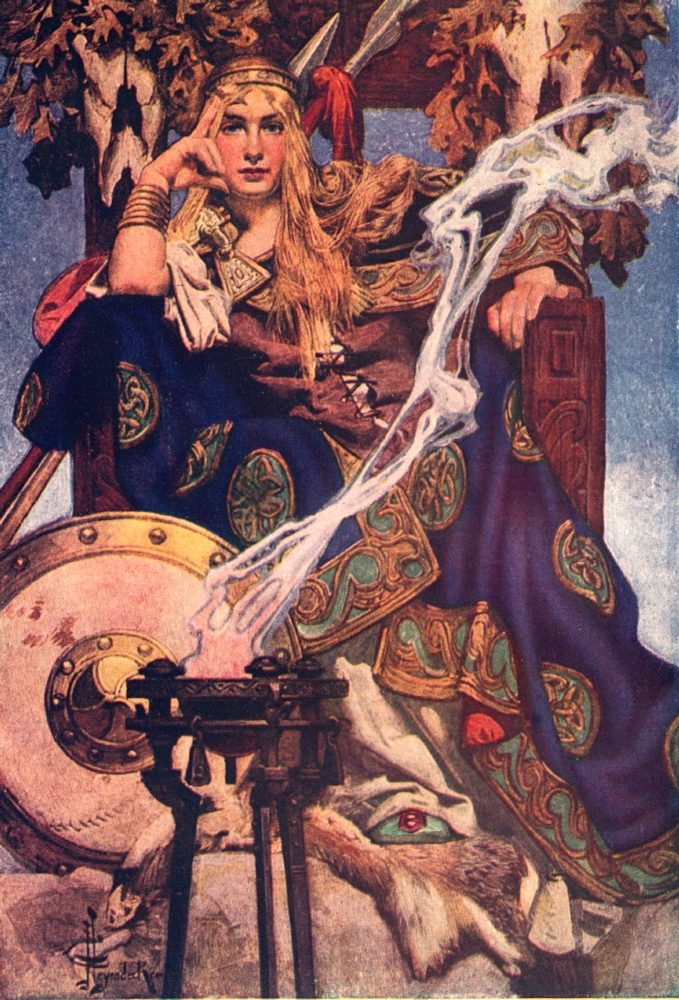 |
|
||
| Kellscraft
Studio Home Page |
Wallpaper
Images for your Computer |
Nekrassoff Informational Pages |
Web
Text-ures© Free Books on-line |
|
MYTHS
& LEGENDS THE CELTIC RACE By T. W. ROLLESTON Author of "The High Deeds of Finn," "The Teaching of Epictetus," A Life of Lessing," etc., Co-editor with the Rev. Stopford A Brooke of "A Treasury of Irish Poetry."  Queen Maev David D. Nickerson & Company Publishers Original Date: 1911 CONTENTS PREFACE I: THE CELTS IN ANCIENT HISTORY II: THE RELIGION OF THE CELTS III: THE IRISH INVASION MYTHS IV: THE EARLY MILESIAN KINGS V: TALES OF THE ULTONIAN CYCLE VI: TALES OF THE OSSIANIC CYCLE VII: THE VOYAGE OF MAELDUN VIII: MYTHS AND TALES OF THE CYMRY GENEAOLGICAL TABLES GODS OF THE HOUSE OF DON GLOSSARY PREFACE The Past may be forgotten, but it never dies.
The elements which in the most remote times have entered into a nation’s
composition endure through all its history, and help to mould that history, and
to stamp the character and genius of the people. The
examination, therefore, of these elements, and the recognition, as far as
possible, of the part they have actually contributed to the warp and weft of a
nation’s life, must be a matter of no small interest and importance to those
who realise that the present is the child of the past, and the future of the
present; who will not regard themselves, their kinsfolk, and their
fellow-citizens as mere transitory phantoms, hurrying from darkness into
darkness, but who know that, in them, a vast historic stream of national life
is passing from its distant and mysterious origin towards a future which is
largely conditioned by all the past wanderings of that human stream, but which
is also, in no small degree, what they, by their courage, their patriotism,
their knowledge, and their understanding, choose to make it. The
part played by the Celtic race as a formative influence in the history, the literature,
and the art of the people inhabiting the British Islands — a people which from
that centre has spread its dominions over so vast an area of the earth’s
surface — has been unduly obscured in popular thought. For this the current use
of the term “Anglo-Saxon” applied to the British people as a designation of
race is largely responsible. Historically the term is quite misleading. There
is nothing to justify this singling out of two Low-German tribes when we wish
to indicate the race-character of the British people. The use of it leads to
such absurdities as that which the writer noticed not long ago, when the proposed
elevation by the Pope of an Irish bishop to a cardinalate was described in an
English newspaper as being prompted by the desire of the head of the Catholic
Church to pay a compliment to “the Anglo-Saxon race.” The
true term for the population of these islands, and for the typical and dominant
part of the population of North America, is not Anglo-Saxon, but Anglo-Celtic.
It is precisely in this blend of Germanic and Celtic elements that the British
people are unique — it is precisely this blend which gives to this people the
fire, the élan, and in literature and art the sense of style, colour,
drama, which are not common growths of German soil, while at the same time it
gives the deliberateness and depth, the reverence for ancient law and custom,
and the passion for personal freedom, which are more or less strange to the
Romance nations of the South of Europe. May they never become strange to the
British Islands! Nor is the Celtic element in these islands to be regarded as
contributed wholly, or even very predominantly, by the populations of the
so-called “Celtic Fringe.” It is now well known to ethnologists that the Saxons
did not by any means exterminate the Celtic or Celticised populations whom they
found in possession of Great Britain. Mr. E.W.B. Nicholson, librarian of the
Bodleian, writes in his important work “Keltic Researches” (1904): “Names
which have not been purposely invented to describe race must never be taken as
proof of race, but only as proof of community of language, or community of
political organisation. We call a man who speaks English, lives in England, and
bears an obviously English name (such as Freeman or Newton), an Englishman. Yet
from the statistics of ‘relative nigrescence’ there is good reason to believe
that Lancashire, West Yorkshire, Staffordshire, Worcestershire, Warwickshire,
Leicestershire, Rutland, Cambridgeshire, Wiltshire, Somerset, and part of
Sussex are as Keltic as Perthshire and North Munster; that Cheshire,
Shropshire, Herefordshire, Monmouthshire, Gloucestershire, Devon, Dorset,
Northamptonshire, Huntingdonshire, and Bedfordshire are more so — and equal to
North Wales and Leinster; while Buckinghamshire and Hertfordshire exceed even
this degree, and are on a level with South Wales and Ulster.”1 It
is, then, for an Anglo-Celtic, not an “Anglo-Saxon,” people that this account
of the early history, the religion, and the mythical and romantic literature of
the Celtic race is written. It is hoped that that people will find in it things
worthy to be remembered as contributions to the general stock of European
culture, but worthy above all to be borne in mind by those who have inherited
more than have any other living people of the blood, the instincts and the genius
of the Celt. |